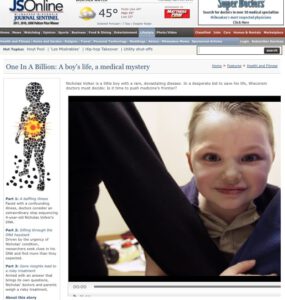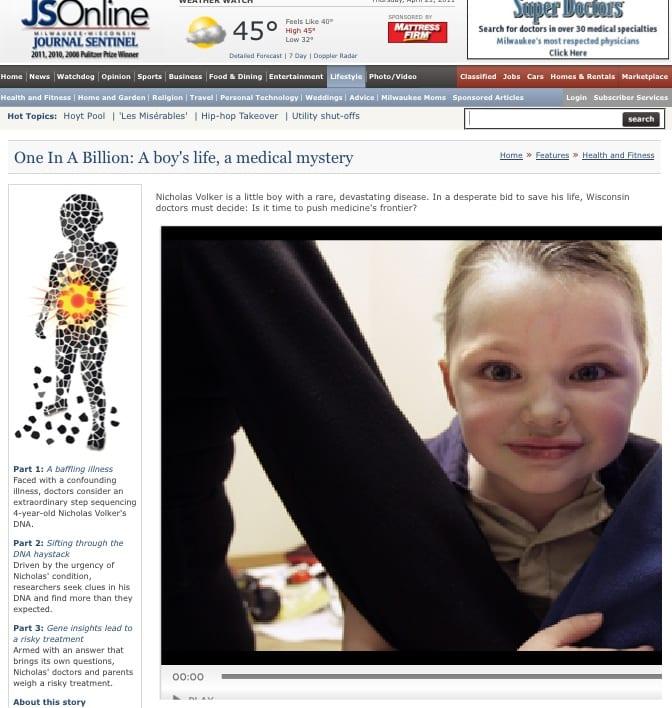
Kathleen Gallagher and Mark Johnson are good reporters but it didn’t take a lot to figure out that the tip they got was big news.
Doctors, Gallagher heard, had used genetic sequencing to crack the mystery behind an illness slowly robbing a young boy of his life.
“The tip that she had was that they had already sequenced a child’s genes and used it for a diagnosis,” Johnson told the Nieman Storyboard in January. Storyboard is a project of the Nieman Foundation for Journalism at Harvard.
“I think she knew that they’d found a mutation, and it was something never seen before,” Johnson said.
The tip was the seed that grew into a riveting and moving three-part series in the Milwaukee Journal Sentinel. The piece, which ran in December of last year, just won the Pulitzer Prize for explanatory reporting. Gallagher and Johnson shared the prize with photographer Gary Porter, videographer Allison Sherwood and graphic artist Lou Saldivar.
The work done by the Children’s Hospital of Wisconsin and the Medical College of Wisconsin pushed into new realms, turning to sequencing for answers to a young boy’s mysterious and life-threatening medical condition. The boy had severe bowel problems that included several abscesses, fistulas and deep fissures that were prone to infection. Now 6, he was first brought into the hospital when he was just 15 months. He underwent more than 100 surgeries by the time he was 3.
At first he was thought to have Crohn’s disease, but years of treatment did little for his symptoms, which got worse. Eventually doctors decided to take a broad exome sequencing approach – where only the gene-coding regions of the genome are sequenced – in an attempt to diagnose and possibly treat his illness. Doctors and researchers painstakingly narrowed down the possible gene mutations responsible for his illness from 16,124 to just one. Now the boy is being treated to maintain his health after receiving a cord blood transplant that the doctors believe will address the damage cause by that single mutation.
Even before the piece was singled out by the Pulitzer committee, the series and the case of the small boy attracted attention from science journals, medical bloggers and those tracking advances in personal genomics.
Luke Jostins helped put the science into context at the blog Genomes Unzipped. More recently over at Wired Science, Daniel MacArthur detailed some other examples of sequencing technology being used to diagnose rare genetic disease.
Single-gene disorders are rare, but collectively they affect as many as one in 10 people in the United States alone. This case offers a glimpse of how genetic medicine could benefit this underserved population, and Gallagher and Johbnson’s Pulitzer Prize-winning series makes the human impact of the science powerfully clear.




